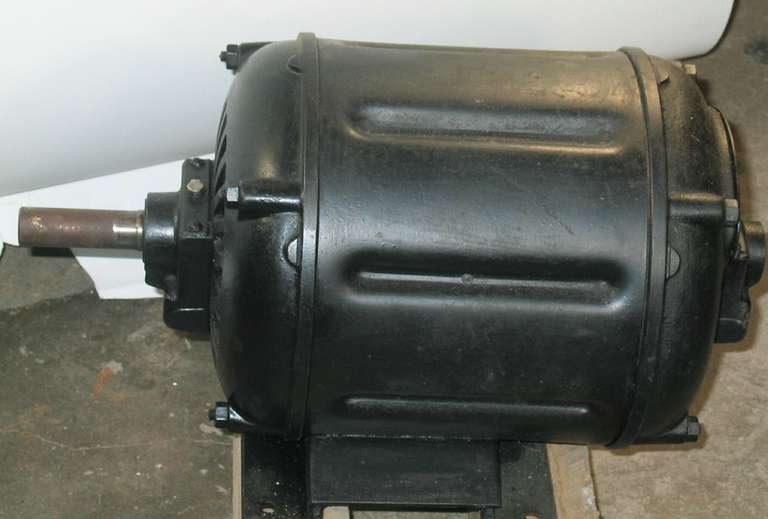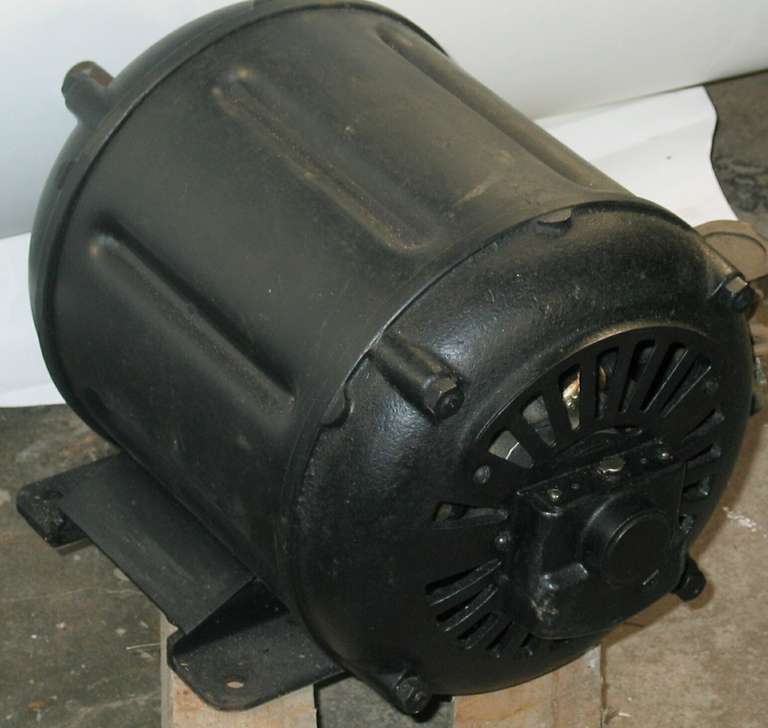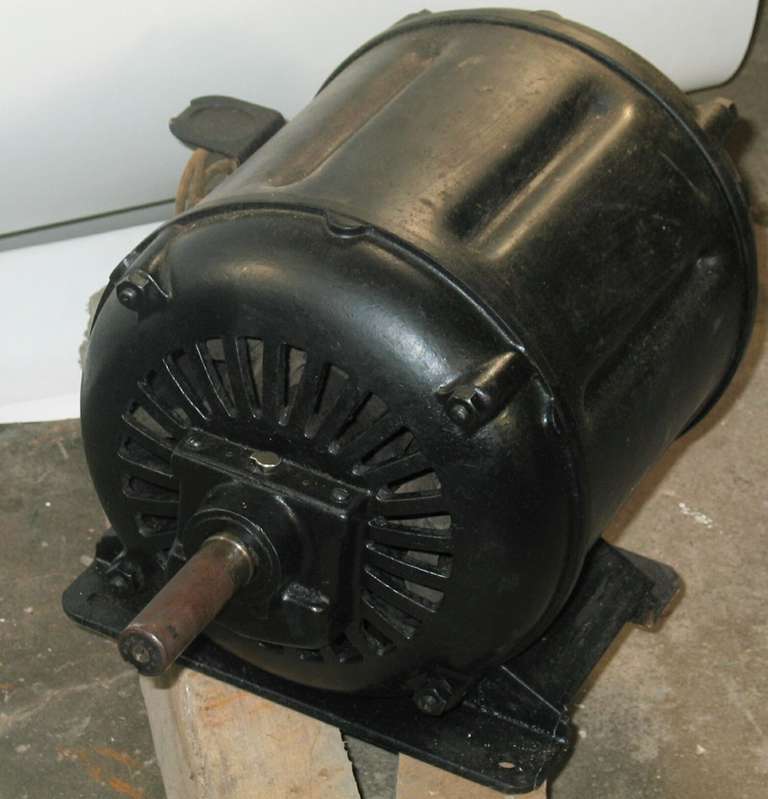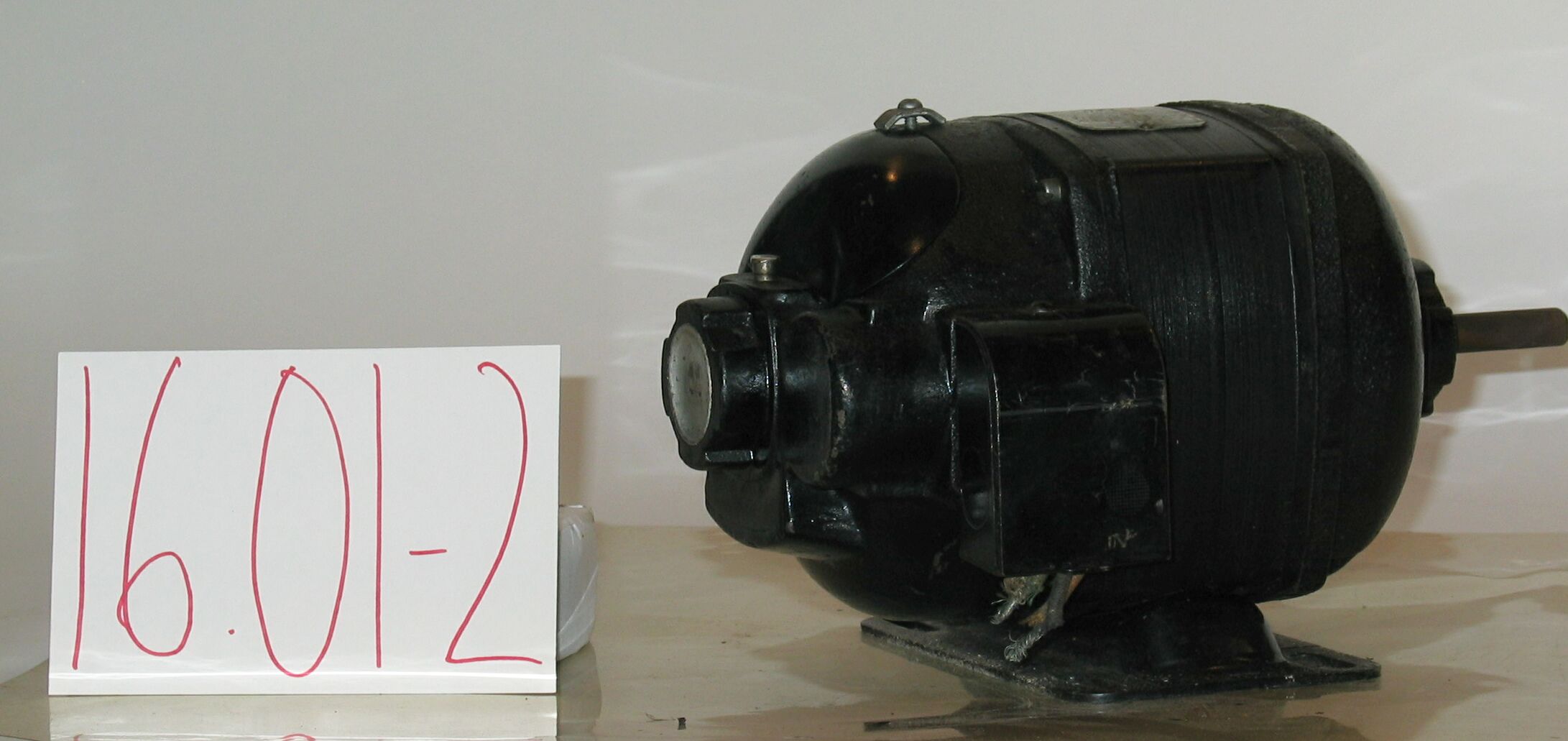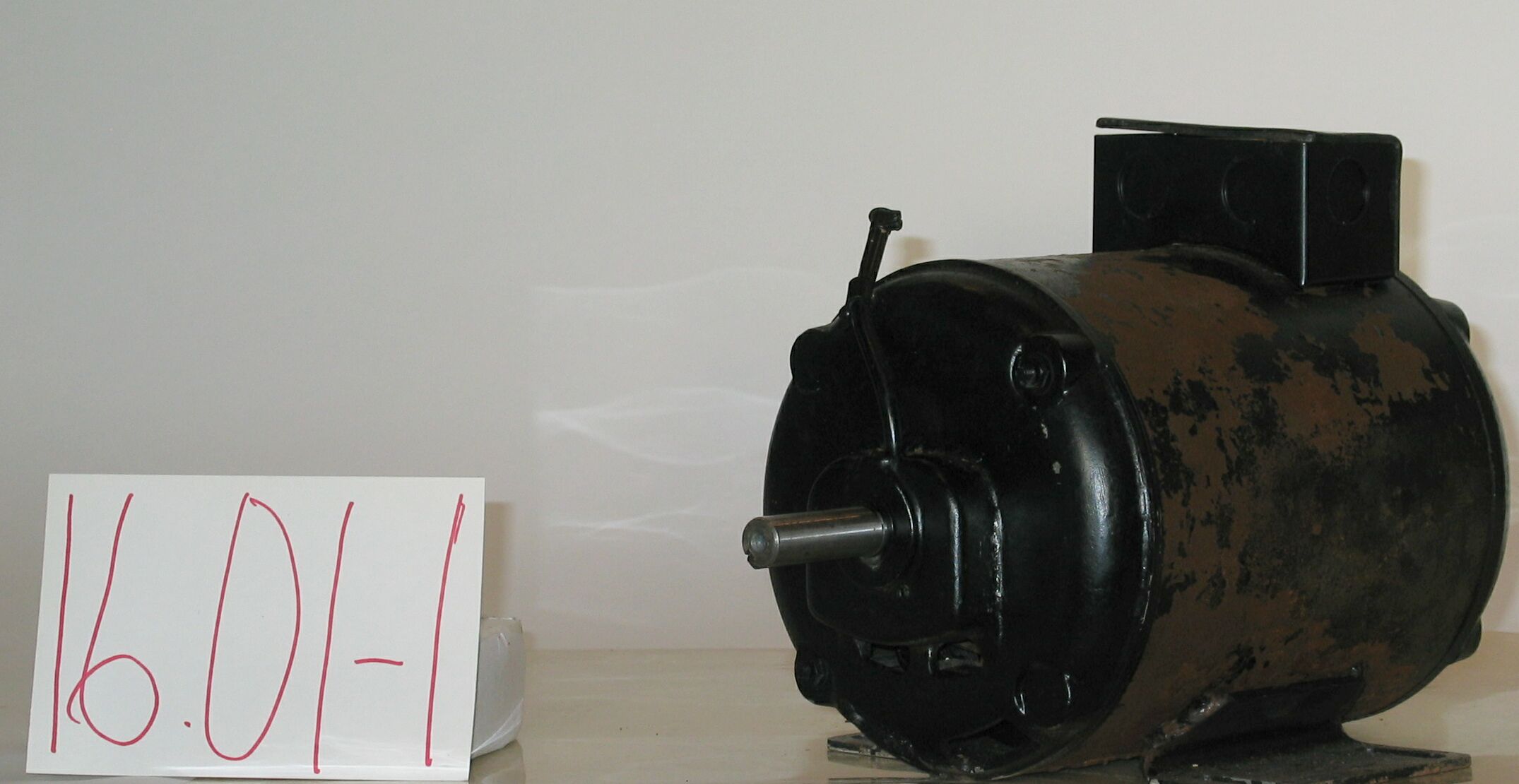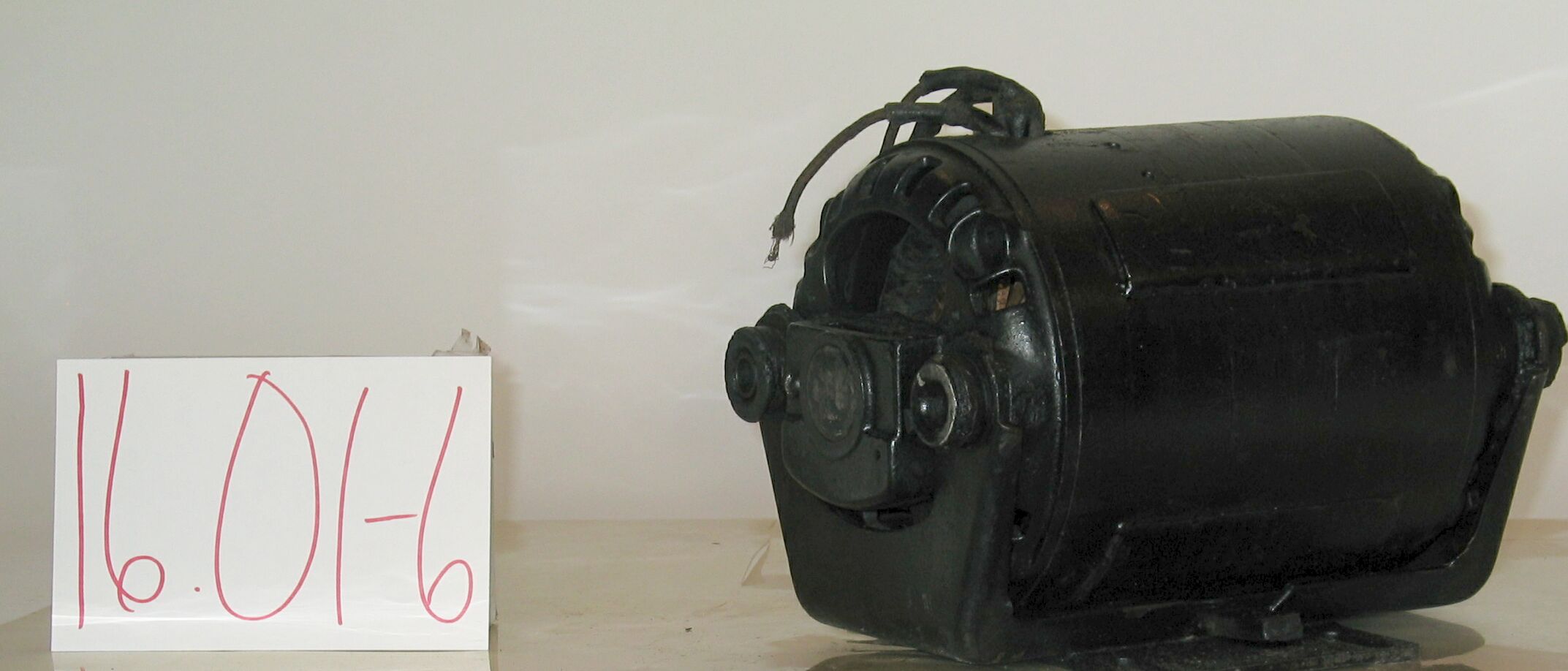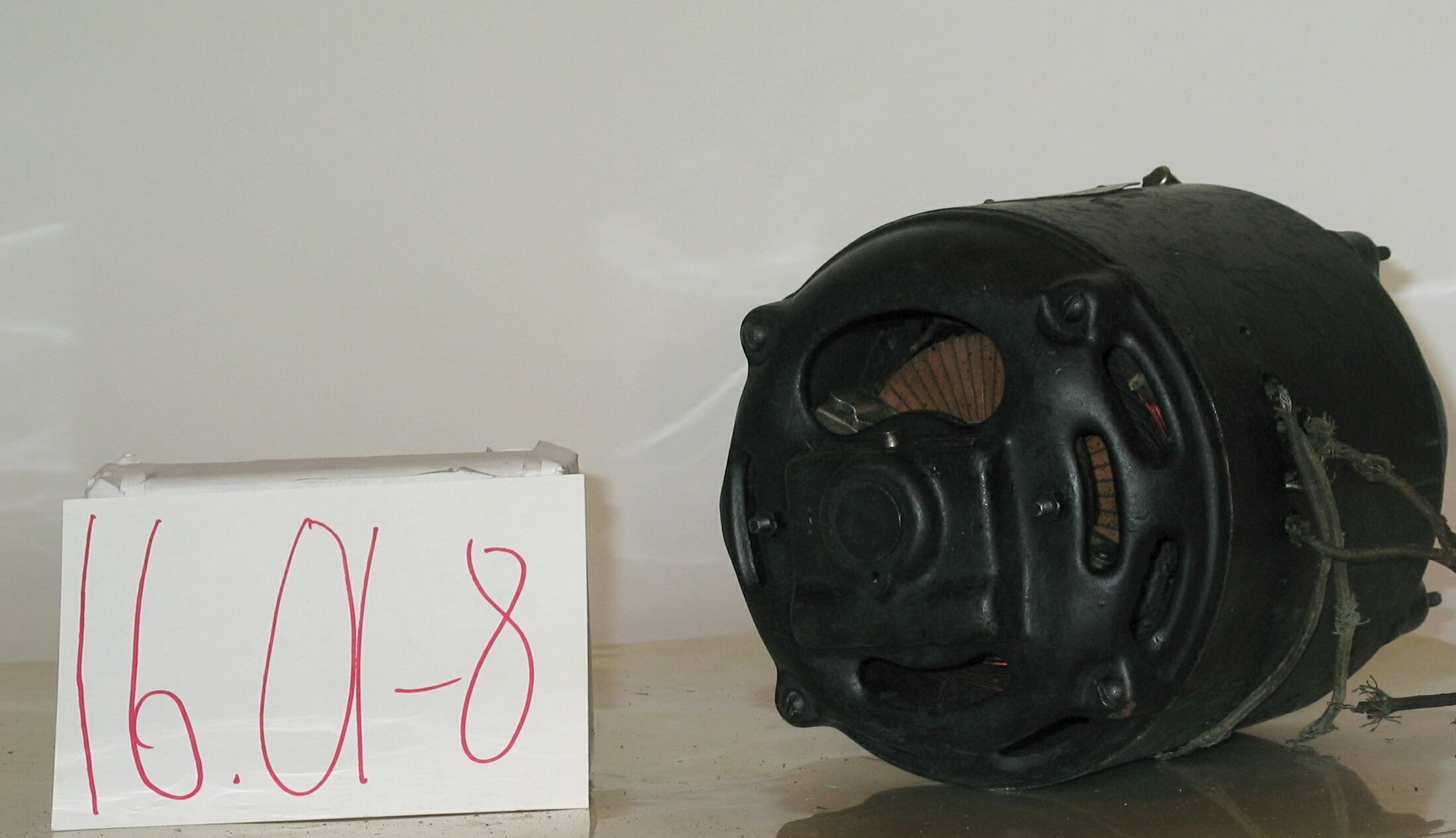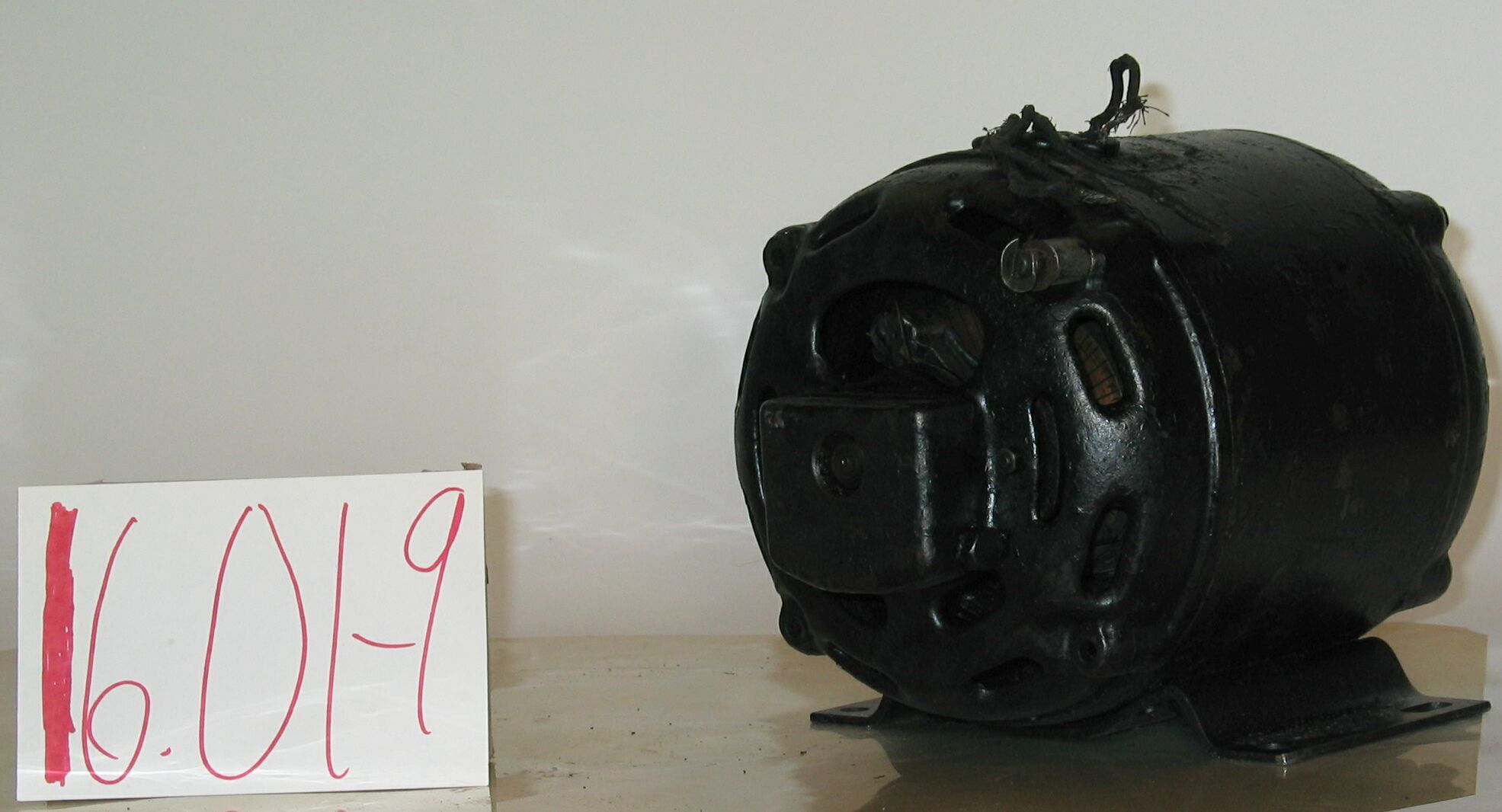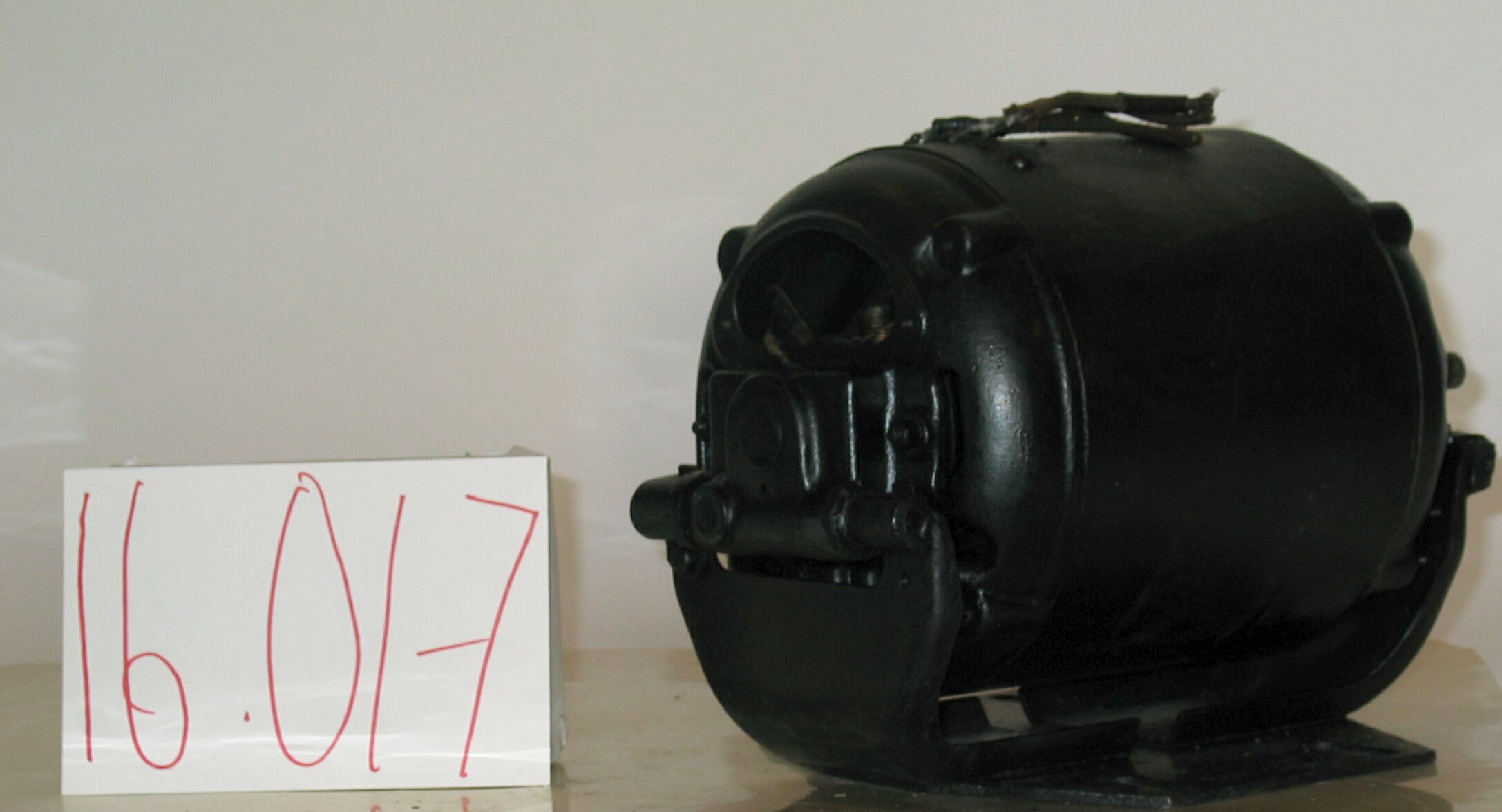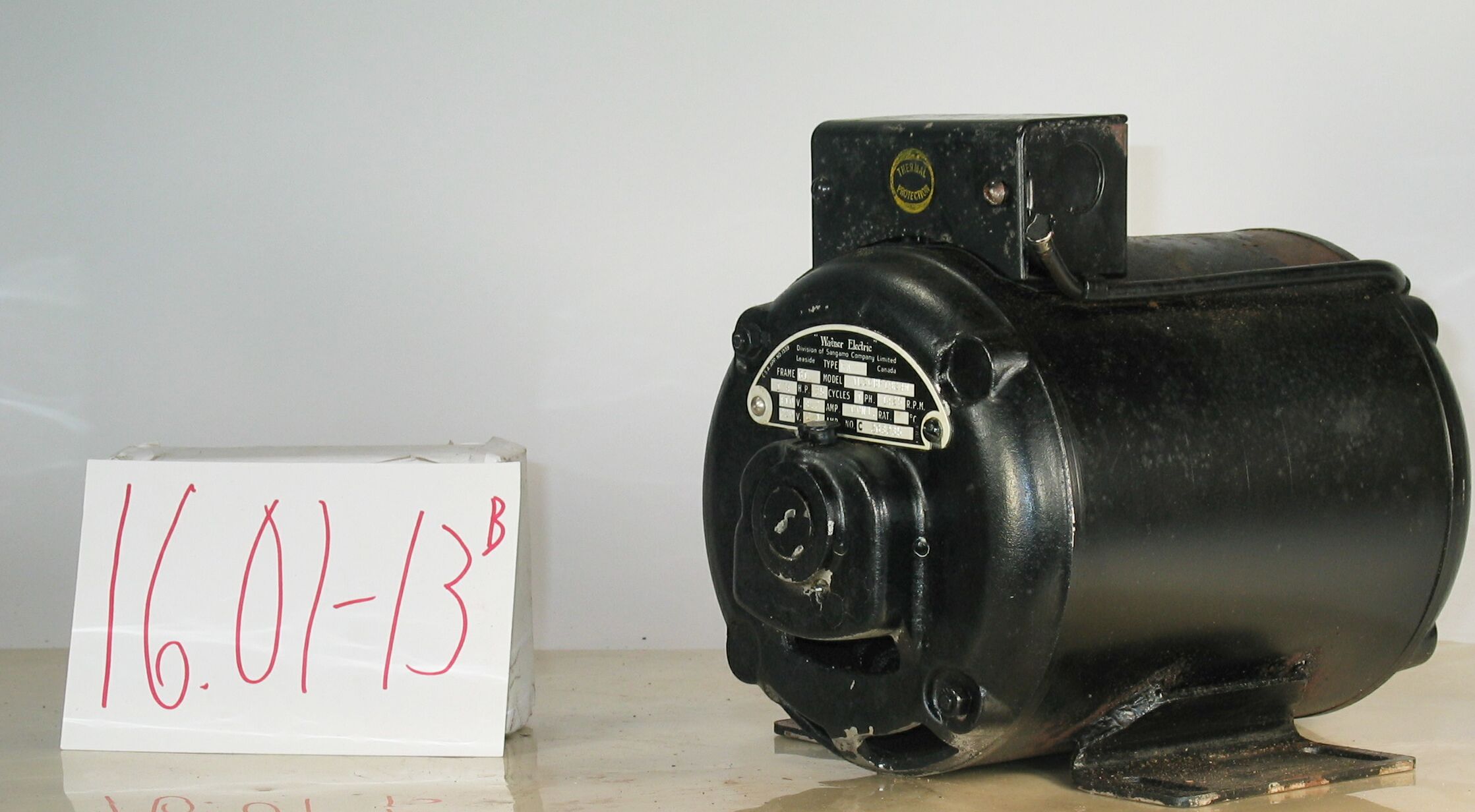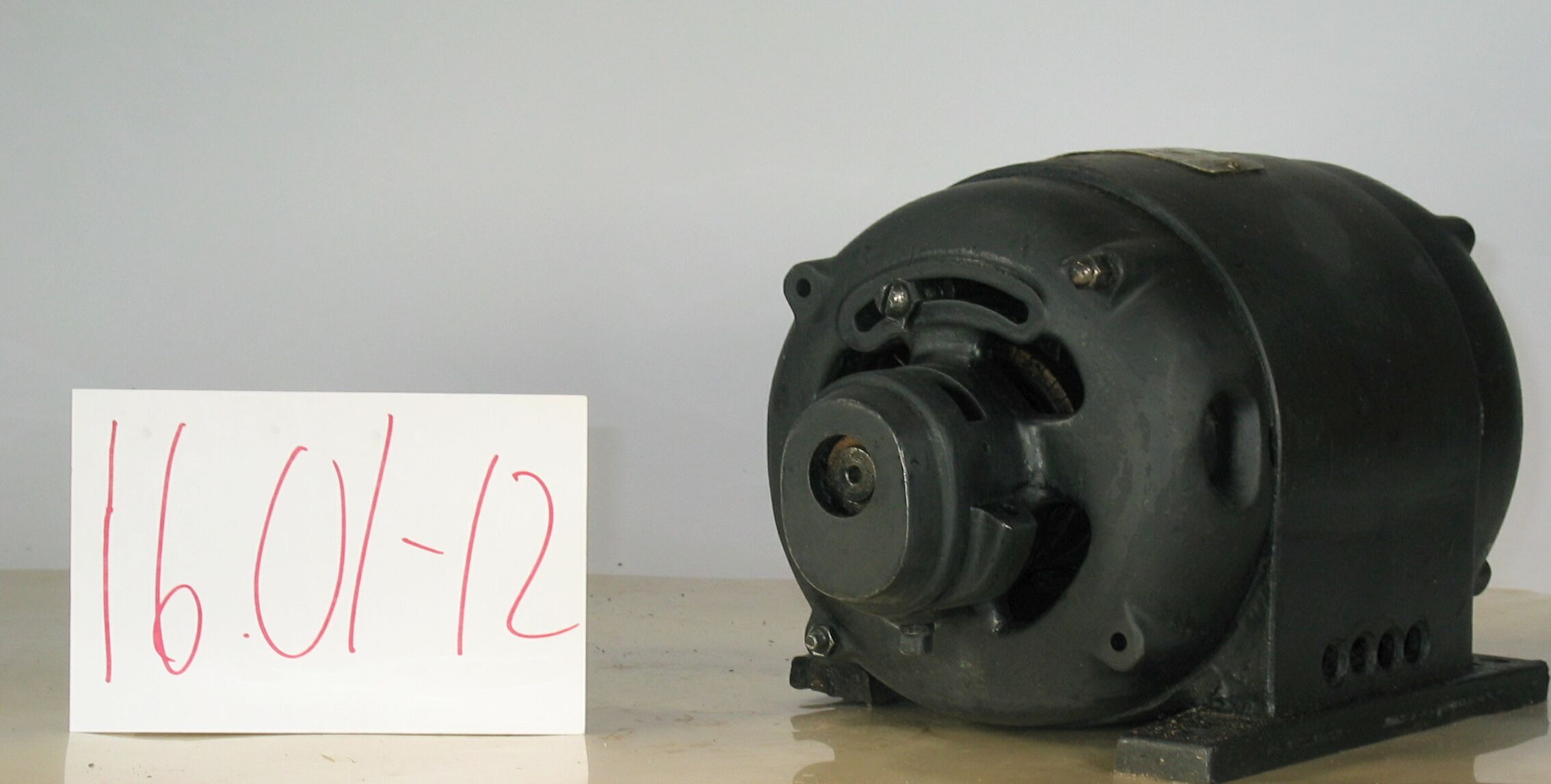16.01-15: Wagner 1942 25 Cycle Repulsion Induction Motor
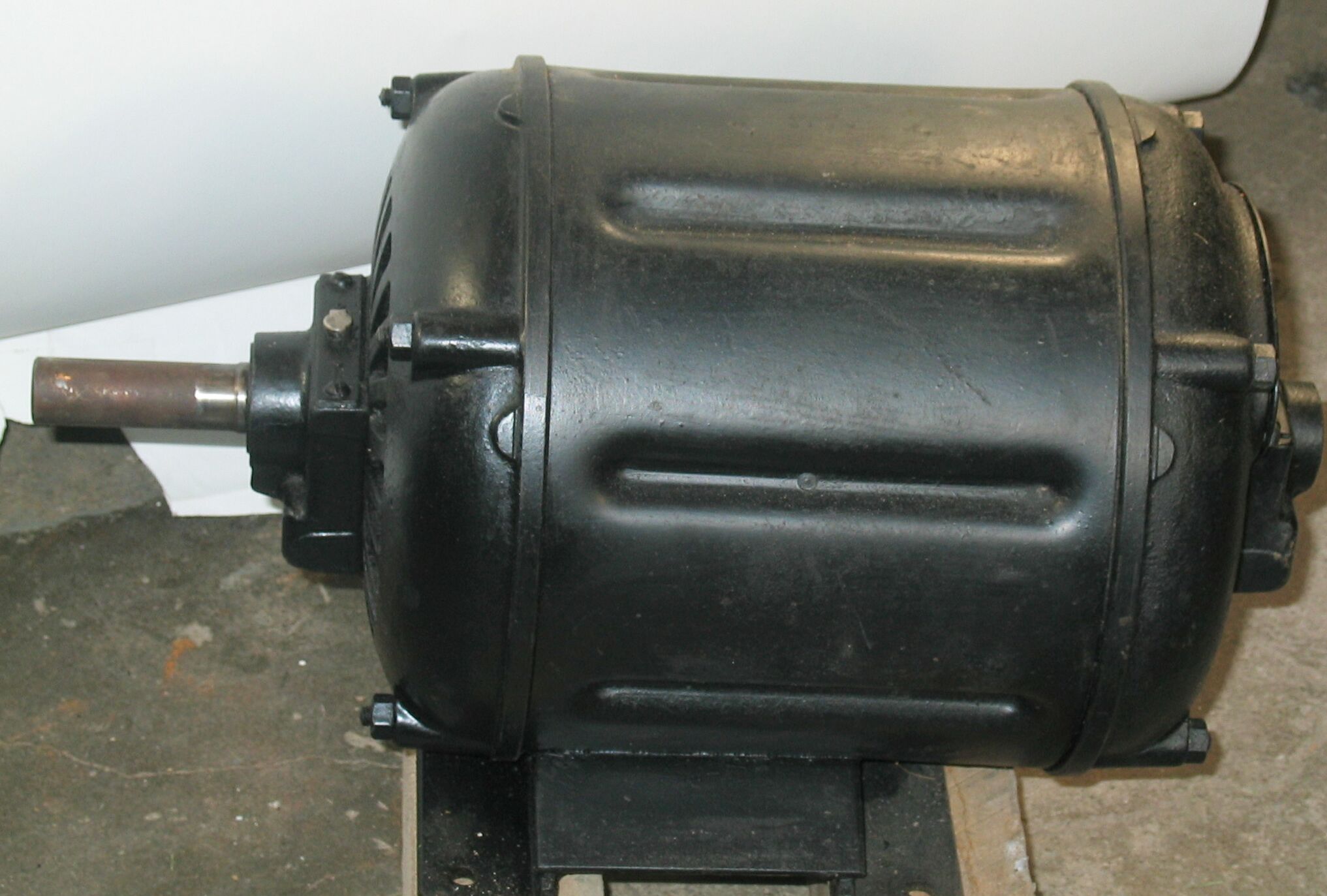
| HHCC Accession No. 2006.185 | HHCC Classification Code: 16.01-15 |
|---|
Description:
An early mid 20th century, classic 1 1/2 HP, 25 cycle, repulsion induction, single phase motor, employing FHP technology extended to cover motors in the integral HP range, making possible larger capacity refrigeration and air conditioning applications in areas not served by industrial three-phase power, Wagner, Circa 1942.
Group:
16.01 Electric Motors - Single Phase, Repulsion Induction
Make:
Wagner
Manufacturer:
Wagner Electric Mfg. Co. of Canada Ltd., Div. of Sangamo Co., Ltd. Leaside Ont.
Model:
Name plate not included
Serial No.:
Size:
21 x 11 x 11’h
Weight:
105 lbs.
Circa:
1942
Rating:
Exhibit, education, and research quality, illustrating the engineering and construction of an early mid 20th century, single phase, 25 cycle, repulsion induction motor with integral HP capacity.
Patent Date/Number:
Provenance:
From York County (York Region) Ontario, once a rich agricultural hinterlands, attracting early settlement in the last years of the 18th century. Located on the north slopes of the Oak Ridges Moraine, within 20 miles of Toronto, the County would also attract early ex-urban development, to be come a wealthy market place for the emerging household and consumer technologies of the early and mid 20th century.
This artifact was discovered in the 1950’s in the used stock of T. H. Oliver, Refrigeration and Electric Sales and Service, Aurora, Ontario, an early worker in the field of agricultural, industrial and consumer technology.
With original shop tag in Howard Oliver’s handwriting ‘Exchange Eaton Hall’
Motor used for many years on a Frick refrigeration condensing unit on a milk cooler application at Eaton Hall farm, the home of Lady Eaton, King Ontario.
Type and Design:
Early mid 20th century, heavy duty, repulsion induction, commutating motor, Rigid 4 bolt base plate Classic Wagner centrifugal brush lifting, armature short circuiting mechanism 11/2 HP Dual voltage, 110-220 volts Bronze sleeve bearings with wick oilers Steel ferro-magnetic body
Construction:
Material:
Special Features:
Accessories:
Capacities:
Performance Characteristics:
Operation:
Control and Regulation:
Targeted Market Segment:
Consumer Acceptance:
Merchandising:
Market Price:
Technological Significance:
An artifact of Canadian history telling many stories of life and times, including Canadian technological innovation, dissemination and popularization of electro-motive and refrigeration technology, including: Witnessing the engineering achievement and wide spread application of elegant and affordable, FHP repulsion induction motor technology by the mid 20th century. The successful adaptation of FHP, single phase, repulsion induction motor technology to integral HP applications, typically 1, 1 1/2, 2, 3, and 5 HP. The installation of refrigeration and air conditioning equipment in areas not served by three-phase power. As a result low pressure refrigeration system applications grew rapidly in the pre W.W.II years and beyond, including small cold storage plants, large food stores, food processing applications and ice cream making, etc ‘ See Reference 7, P. 7 The development of large diary farms, such as the one at Eaton Hall, made possible by mechanical refrigeration equipment for rapid milk cooling and storage, prior to shipment to the dairy for processing.
Repulsion induction motor technology was above all a marvel of its time, a technology born of both science and the consumer market place, a classic formula for the innovation and diffusion of popular technology, throughout the balance of the 20th century and on in to the 21st. Scientifically, the work of Faraday and many others laid much of the theoretical foundations for electromagnetic devices, the marvel of the early 20th century [much in the same way digital devices became the marvel of the early years of the 21st]. The wonders made possible by alternating current energised, rotating magnetic fields and the electric and magnetic circuitry that made them possible would soon be exploited by those interested in their application in applied electro-motive technology, including Steinnmetz and others. [See References especially #I, 2, and 5] See also ID# 296
Industrial Significance:
See also notes ID# 296
Socio-economic Significance:
Socio-cultural Significance:
See also notes ID# 296
Donor:
G. Leslie Oliver, The T. H. Oliver HVACR Collection
HHCC Storage Location:
Tracking:
Bibliographic References:
‘Fractional Horsepower Electric Motors’, Cyril Veinott, McGraw Hill New York, 1948 ‘Rewinding Small Motors’, Daniel Braymer and C.C. Roe, McGraw Hill, 1932 ‘Theory and Application of Capacitor-Start Induction Motors’, G. L. Oliver, Bachelor Thesis ,University of Toronto, Session 1951-52 ‘Modern Refrigeration and Air Conditioning’, Electric Motors, Chapter 7, Andrew Althouse and Carl Turnquist, Goodheart-Wilcox, 1960 ‘A course in Electrical Engineering, Volume II, Alternating Current’, Chester Dawes, McGraw Hill, 1934, Starting single Phase Induction Motors, P. 362. ‘The Fractional Horsepower Motor and its Impact on Canadian Society and Culture’, G. Leslie Oliver, Material History Review, Vol. 43, Journal National Museum of Science and Technology, 1996. ‘RESCO’ Refrigeration Supplies’ London Ontario, Circ 1942, P. 7
